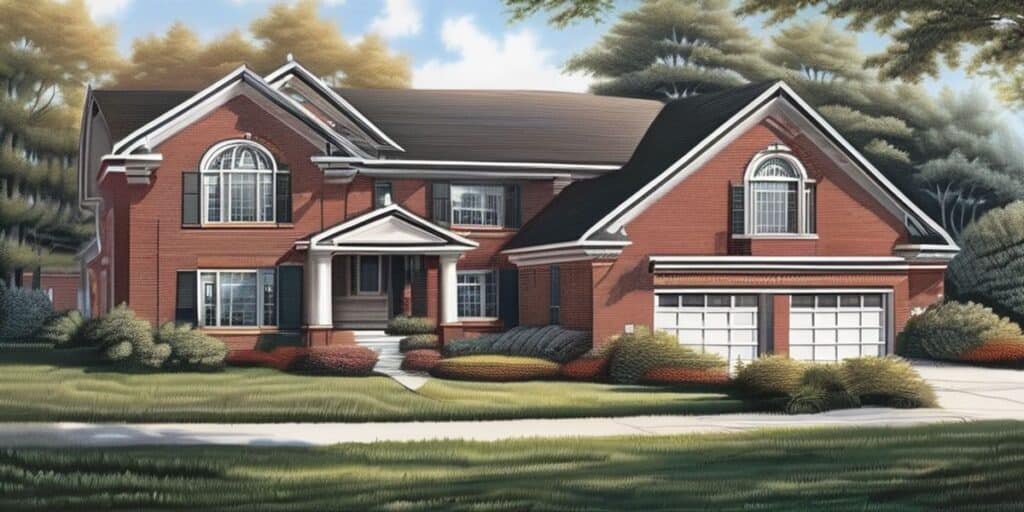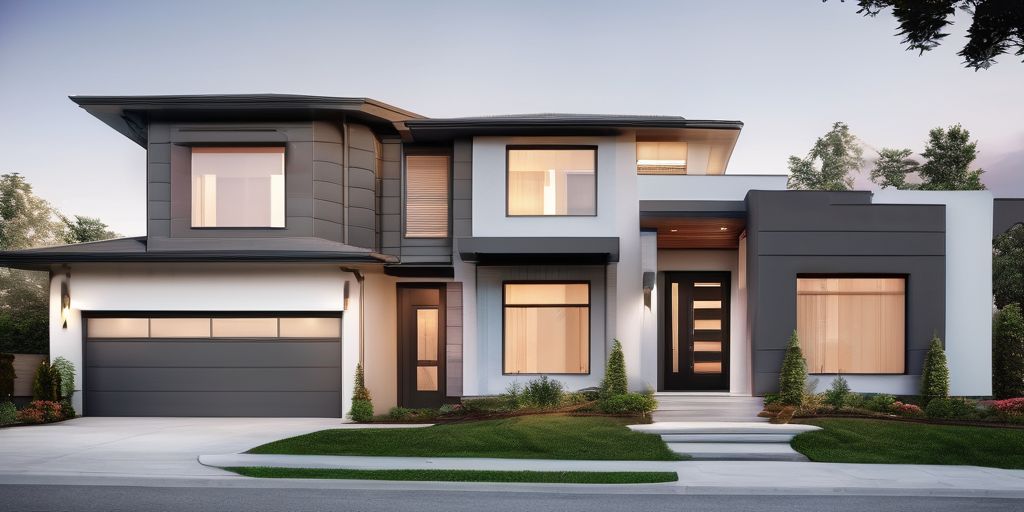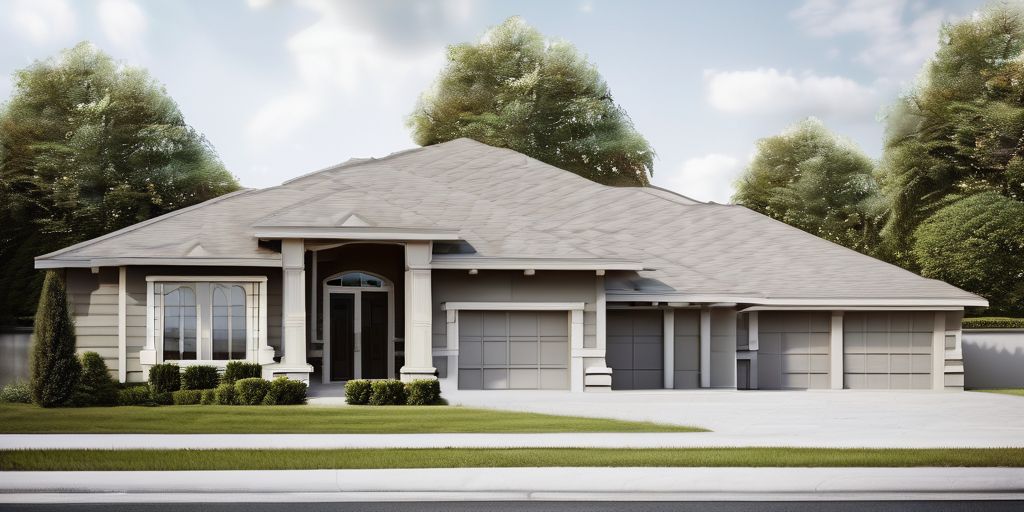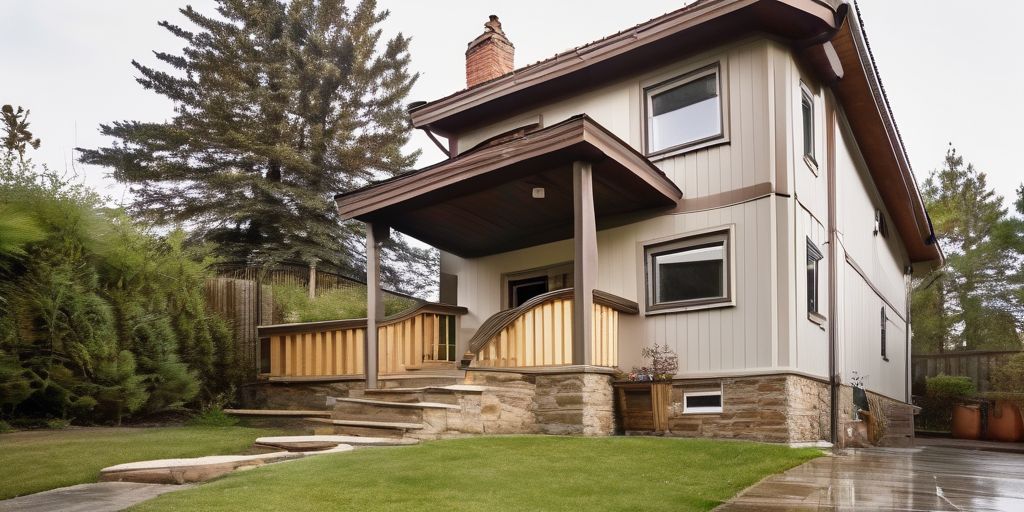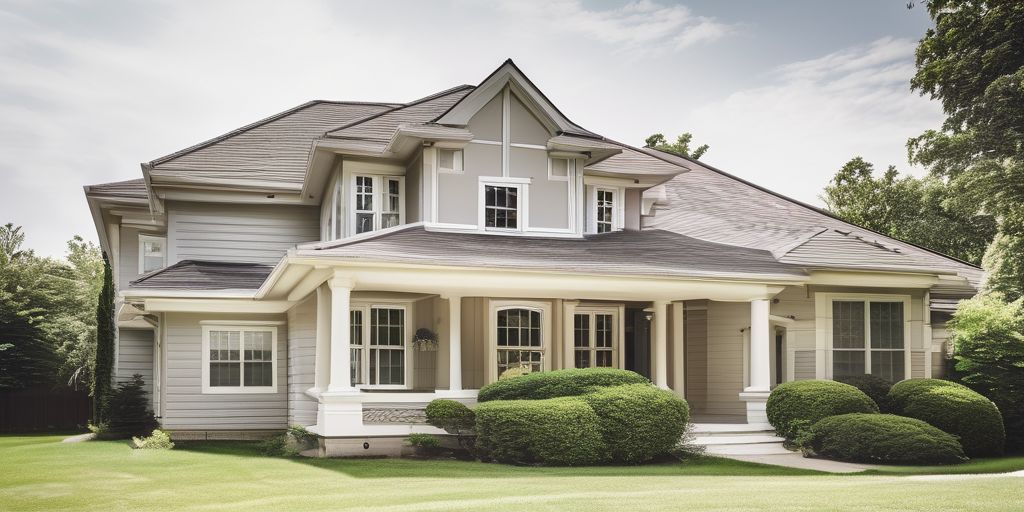In the picturesque city of Niagara Falls, creating a harmonious visual landscape is key to complementing its natural beauty. Single-tone brick painting is a technique that can transform the aesthetic of any building, offering a fresh and uniform look. This article delves into the essentials of single-tone brick painting, from selecting the right paint to maintaining the brickwork. Whether you’re a DIY enthusiast or a professional, these insights will help you achieve a stunning, cohesive colour theme that stands out against the backdrop of Niagara Falls.
Key Takeaways
- Choosing the right paint for brick involves considering factors like permeability, durability, and finish to ensure a lasting application.
- Proper preparation, including cleaning and priming, is crucial for a finish that adheres well and stands the test of time.
- Understanding colour theory and the natural surroundings of Niagara Falls can guide you in designing a colour theme that enhances both the architecture and the environment.
- DIY enthusiasts should prioritize safety, use the right tools, and be prepared to address common painting challenges for a successful project.
- Regular cleaning, timely touch-ups, and protective measures are essential for maintaining the aesthetics and longevity of your painted brickwork.
The Basics of Single-Tone Brick Painting
Choosing the Right Paint for Brick
Selecting the appropriate paint for brick surfaces is crucial for both aesthetic appeal and longevity. Brick is a porous material, and as such, it requires a paint that can breathe to prevent moisture from becoming trapped, which can lead to peeling and other issues.
- Acrylic latex paint is often recommended for brick because it’s durable and has good adhesion properties.
- Elastomeric paint is another option that can fill and bridge small cracks due to its flexibility.
- Masonry paint is specifically formulated for brick and other masonry surfaces, providing a breathable layer that resists mildew and stains.
When painting brick, it’s important to consider the local climate. In areas like Niagara Falls, where the weather can be quite variable, a paint that can withstand temperature changes and humidity is essential.
Remember to check the paint’s permeability rating. A higher perm rating indicates better moisture vapor transmission, which is beneficial for brick surfaces. Always follow the manufacturer’s instructions for the best results.
Preparation Steps for a Lasting Finish
Proper preparation is crucial for achieving a professional-looking and durable painted brick surface. Before applying any paint, the brick must be in optimal condition. Here’s a step-by-step guide to ensure your bricks are ready for a single-tone transformation:
- Inspect the brickwork for any signs of damage or wear. Look for cracks, chips, or any areas that might need repair before painting.
- Clean the brick surface thoroughly to remove dirt, grime, and any efflorescence. A clean surface ensures better paint adhesion.
- Repair any damage you’ve identified. This might include filling cracks or replacing damaged bricks to create a smooth, uniform surface.
- Apply a quality primer specifically designed for brick surfaces. This will help the paint adhere better and provide a more even coverage.
Remember, the longevity of your paint job is directly related to the quality of the preparation. Taking the time to prepare your brickwork meticulously will pay off in the long run with a finish that remains vibrant and intact through the seasons.
While not a step, it’s important to consider the weather conditions when planning your painting project. Ideal conditions are a dry day with moderate temperatures, which Niagara Falls offers in the late spring through early fall.
Application Techniques for Even Coverage
Achieving even coverage when painting bricks with a single tone is crucial for a uniform look. Here are some techniques to help you get the best results:
- Start with a primer to ensure that the paint adheres well to the brick surface.
- Use a high-quality paint sprayer for large areas to achieve a consistent coat.
- For smaller areas or touch-ups, a brush can provide more control.
- Apply paint in a systematic pattern, working from top to bottom to avoid drips.
Remember, patience is key. Allow each coat to dry thoroughly before applying the next to avoid uneven texture and color.
It’s also important to consider the conditions under which you are painting. Avoid extreme temperatures and direct sunlight, as these can affect the drying process and the final appearance of the paint. If you’re painting outdoors in Niagara Falls, try to choose a day with mild weather to ensure the best outcome.
Designing Your Colour Theme
Understanding Colour Theory
Colour theory is essential when deciding on a palette for single-tone brick painting. The 60-30-10 rule is a classic guideline that can help create a balanced and harmonious look. This rule suggests that 60% of the space should be the dominant color, 30% a secondary color, and 10% an accent color. While bricks may not allow for such a direct application, the principle can guide the overall theme of your property.
Colour perception is influenced by lighting and the surroundings. In the context of Niagara Falls, consider how the natural light and the mist from the falls might affect how the colors appear on your bricks. It’s not just about the color itself, but how it interacts with the environment.
- Choose a dominant color that reflects the natural beauty of the area.
- Select a secondary color that offers a subtle contrast or complement.
- Pick an accent color for small details that will stand out.
Remember, the goal is to enhance the aesthetic appeal of your property while respecting the local ambiance. The colors you choose should blend seamlessly with the natural landscape and architectural style of Niagara Falls.
When considering a color theme, it’s also important to think about the mood you want to evoke. Warm colors can create a cozy and inviting atmosphere, while cool colors might convey calmness and serenity. Always consider the visual impact of your color choices on the overall mood of your living space.
Complementing Niagara Falls’ Natural Beauty
When painting bricks in a single-tone theme, it’s essential to consider the surrounding environment to achieve a harmonious look. Niagara Falls offers a unique palette of natural colors that can inspire your choice of paint. Here are some tips to complement the area’s beauty:
- Select colors that reflect the local landscape: Opt for hues that mirror the blues and greens of the water or the earthy tones of the surrounding foliage.
- Weatherproofing is crucial: Choose paints that can withstand the local climate, including the mist from the falls.
- Consider the changing seasons: Colors that look stunning against a snowy backdrop might appear different in the full bloom of spring.
Embracing the natural beauty of Niagara Falls doesn’t mean sacrificing personal style. Accent features, like window trims or shutters, can add a unique touch while still fitting within the overall theme.
For a lasting finish, regular maintenance is key. This includes cleaning the bricks and touching up the paint as needed to ensure that your home remains as captivating as the nearby Niagara River Gorge.
Creating Mood with Colour Choices
The colours you choose for your brick painting project can significantly influence the mood and atmosphere of your space. Warm tones, such as reds and oranges, can create a cozy and inviting environment, while cool tones like blues and greens often evoke a sense of calm and serenity.
When selecting a colour for outdoor brick painting near Niagara Falls, it’s essential to consider the harmony between your chosen hue and the surrounding environment. A colour that complements the natural beauty of the area can enhance the overall aesthetic appeal of your property. For instance, earthy tones can harmonize with the lush landscapes and the misty backdrop of the Falls, potentially increasing your property’s value.
For a lasting finish, prioritize paint options that offer durability, texture compatibility, and resistance to the local climate, including UV exposure.
In historic areas such as Brantford, it’s crucial to select colours that respect the architectural style and local heritage. This ensures a harmonious blend with the urban design and contributes to a visually appealing environment. Here’s a simple list to guide your colour selection:
- Evaluate the local architecture and historical context
- Consider the impact of colour on mood and space
- Choose paints with high durability and climate resistance
Remember, the right colour can transform a commercial or residential space, setting the tone for bright and vibrant interactions.
Practical Tips for DIY Enthusiasts
Safety Measures and Best Practices
When undertaking a single-tone brick painting project, safety should always be your top priority. Always wear protective gear, including gloves, goggles, and a respirator mask to shield yourself from paint fumes and debris. Here’s a quick checklist to ensure a safe painting environment:
- Ensure proper ventilation if painting indoors.
- Keep a first aid kit readily accessible.
- Secure ladders and scaffolding to prevent falls.
- Follow the manufacturer’s instructions for all painting supplies.
It’s also essential to use the right tools for the job to prevent accidents and achieve a professional finish. A roller is suitable for large, flat surfaces, while brushes are better for edges and small areas. Remember, safety is not just about personal protection; it’s also about preserving the integrity of your brickwork. Opt for masonry paint that allows bricks to “breathe,” preventing moisture buildup that can lead to damage.
While focusing on safety, don’t forget the importance of durability in your painting supplies. High-quality paint can make a significant difference in the longevity of your brickwork’s new look.
Lastly, always clean your tools after use. Proper maintenance of your rollers and brushes will extend their life and ensure they’re ready for your next project. Submerge rollers in warm water with a few drops of mild dish soap for an effective clean.
Tools You’ll Need for the Job
Before you embark on your brick painting project, it’s essential to gather all the necessary tools to ensure a smooth and efficient process. Here’s a list of the basic tools you’ll need:
- Quality paintbrushes of various sizes for precision and coverage
- Paint rollers with an extended handle for reaching higher areas
- A sturdy ladder, ensuring it’s safe and appropriate for the height you’ll be working at
- Painter’s tape for protecting window frames and other areas you don’t want to paint
- Drop cloths or plastic sheeting to protect the ground and surrounding areas from paint spills
- A wire brush or pressure washer for cleaning the bricks before painting
Remember, proper preparation is key to achieving a lasting finish. This includes managing moisture levels, especially in areas like Niagara Falls where the climate can be challenging. Ensure your bricks are dry and clean before applying paint to avoid any issues with adhesion.
When selecting your tools, opt for durability over cost-saving. The right tools can make a significant difference in the application process and the final look of your painted bricks.
Troubleshooting common issues can be straightforward if you’re equipped with the right knowledge. For instance, if you encounter paint that isn’t adhering well, it might be due to the bricks being too damp or dirty. A professional assessment is often beneficial to address such challenges effectively.
Troubleshooting Common Painting Challenges
When tackling the task of single-tone brick painting, even the most diligent DIY enthusiast can encounter challenges. Here are some practical tips to help you navigate common issues:
- Ensure proper surface preparation before painting. This includes cleaning the bricks thoroughly and repairing any cracks or damage.
- If paint isn’t adhering well, it might be due to a dirty or wet surface. Allow the brick to dry completely and clean off any dirt or efflorescence.
- Uneven coverage can be rectified by applying a primer specifically designed for brick surfaces before the topcoat.
Remember, patience and attention to detail are key when applying paint to brickwork. Rushing the process can lead to unsatisfactory results and more work in the long run.
For those who prefer to leave it to the professionals, hiring an exterior painter can ensure that these common challenges are expertly managed. Additionally, while enjoying the picturesque views of Niagara Falls, it’s important to consider the impact of the local climate on your painting project. The moisture from the falls can affect drying times and the overall finish.
Maintaining Your Brickwork Aesthetics
Cleaning and Upkeep of Painted Bricks
Maintaining the appearance of your painted brickwork is essential for preserving its beauty and longevity. Regular cleaning is a key aspect of upkeep, ensuring that your home continues to complement the stunning backdrop of Niagara Falls. Here are some practical steps to follow:
- Work in small areas: This prevents the bricks from drying out during the cleaning process. Use a firm, plastic-bristled brush to scrub the surface in a circular motion.
- Gentle cleaning: When tackling painted walls, start from the top and work your way down. Rinse each section after cleaning and apply minimal pressure to avoid damaging the paint.
- Routine checks: Regularly inspect your brickwork for signs of wear or damage. This allows for timely touch-ups and maintenance, keeping your home looking its best.
It’s important to choose the right tools and techniques for cleaning to avoid any damage to the paint or brickwork. High-quality paint and proper preparation are the foundation of durable and attractive brick aesthetics.
Remember, the goal is to maintain the integrity of the paint while ensuring that your brickwork remains a testament to both tradition and innovation. With the right approach, your painted bricks can withstand the test of time and continue to enhance the natural beauty of the Niagara region.
When to Touch Up or Repaint
Knowing when to touch up or repaint your brickwork is crucial for maintaining a uniform color theme. Over time, painted surfaces can fade, chip, or peel due to various factors such as weather conditions and wear and tear. Here are some indicators that it might be time to refresh your brickwork:
- Fading color intensity, which can be more noticeable in areas with high sun exposure.
- Visible chipping or flaking of the paint, especially around corners and edges.
- The presence of moisture or mildew, which can compromise the paint’s integrity.
It’s important to address these issues promptly to prevent further damage to the brickwork and to keep your home looking its best.
In the Niagara Falls region, where the mist from the falls can accelerate wear on exterior surfaces, it’s wise to conduct regular inspections of your brickwork. If you notice any of the above signs, plan for a touch-up or a full repaint to protect and enhance the beauty of your home. Remember, a well-maintained brick facade not only adds to the aesthetic appeal but also contributes to the overall value of your property.
Protecting Your Brickwork from the Elements
Ensuring the longevity and beauty of your brickwork involves more than just the initial application of paint. Proper maintenance is crucial in safeguarding the painted surface from the harsh elements. Here are some practical steps to protect your brickwork:
- Regularly inspect for signs of damage or wear, such as cracks or fading.
- Clean the bricks gently to remove dirt, algae, or mildew without damaging the paint.
- Apply a breathable sealant that allows moisture to escape while providing a barrier against rain and snow.
In areas with significant weather variations, like Niagara Falls, it’s important to consider the impact of freezing and thawing cycles on your brickwork. A sealant that offers water resistance and UV protection can be particularly beneficial in preserving the color and integrity of the paint.
Remember, the goal is to maintain the aesthetic appeal of your brickwork while ensuring it stands up to the environment.
When choosing products for maintenance, focus on those that complement the local architecture and climate to ensure both longevity and aesthetic appeal. Avoid harsh chemicals that can erode the brick surface or paint. Instead, opt for gentle, eco-friendly options.
Enhance the beauty and longevity of your home’s brickwork with our expert services at We Paint Siding. Our team specializes in maintaining and revitalizing your brick aesthetics, ensuring your home always looks its best. Don’t let weathering or age dull the appearance of your property. Visit our website to explore our range of services, view stunning before-and-after transformations, and book your free estimate today. Let us help you fall in love with your home all over again!
Conclusion
In conclusion, creating a uniform color theme with single-tone brick painting can significantly enhance the aesthetic appeal of buildings in Niagara Falls. This method not only revitalizes the exterior of properties but also contributes to a cohesive and visually pleasing environment. Whether you’re a homeowner looking to update your residence or a business aiming to stand out, single-tone brick painting offers a timeless and elegant solution. Embrace the simplicity and beauty of a singular color palette, and watch as it transforms the character of your space, making it a standout feature in the majestic backdrop of Niagara Falls.
Frequently Asked Questions
What type of paint should I use for single-tone brick painting?
It’s important to choose paint that is specifically formulated for brick surfaces. Look for masonry or elastomeric paint that can withstand the elements and allow the bricks to breathe.
How do I prepare my brick surface for painting?
Preparation involves cleaning the bricks, removing any loose mortar, and repairing cracks. Apply a primer suitable for masonry to ensure a smooth and lasting finish.
What are some techniques for achieving even coverage when painting bricks?
Use a high-quality brush or roller designed for textured surfaces. Apply paint in a consistent direction and use multiple coats if necessary to achieve even coverage.
How can I use colour to complement the natural beauty of Niagara Falls?
Choose colours that reflect the surrounding landscape, such as earth tones or blues and greens that echo the water. These colours can help integrate your home with the natural environment.
What safety measures should I take when painting my brick home?
Wear protective clothing, goggles, and a mask to prevent inhalation of dust and fumes. Ensure your ladder is stable and use a harness if working at heights.
How often should I touch up or repaint my brickwork?
The longevity of your paint job depends on the climate and exposure to the elements. Inspect your brickwork annually and plan to touch up or repaint every 5 to 7 years, or as needed.

